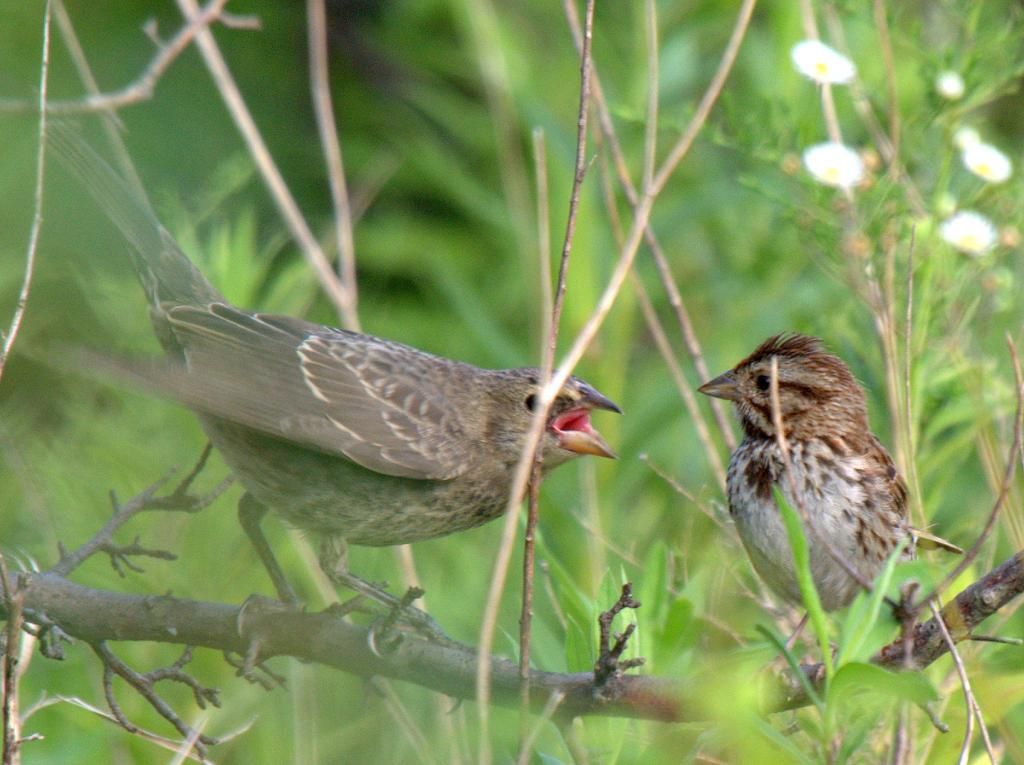
4 August 2020
On a late July visit to Washington’s Landing (Herr’s Island) I saw two song sparrow families with begging fledglings. Unfortunately the begging youngsters were brown-headed cowbirds, not song sparrows.
Female brown-headed cowbirds lay their eggs in the nests of smaller birds. Each cowbird chick is raised, not by its own mother, but by foster parents of another species. To make matters worse, cowbird parents lurk near the foster nest to make sure their own baby survives. They remove the host’s eggs or kill the foster parents’ young to give their own chick a better chance.
Cowbirds parasitize many species but are especially fond of song sparrows and yellow warblers. Yellow warblers are well aware of cowbird eggs and will “abandon” the nest by building a new nest on top of the old one. Experienced song sparrows get upset but don’t have an immediate solution.
However, song sparrows have a secret weapon — their breeding season is longer. Their first brood (of two to four per year) can begin before cowbirds are ready to lay eggs in mid to late April. Their last nest can start after cowbirds are done breeding.
In Pennsylvania brown-headed cowbirds stop laying in early July while song sparrows are still going strong. What I saw at Washington’s Landing was the last round of cowbird babies for the year.
(photo from Wikimedia Commons; click on the caption to see the original)
Hi Kate,
Sorry, I’m a day late but just wanted to wish you much happiness in your new place.
Maybe a peregrine might roost on your windowsill.
In a related story, we had an interesting spring in our backyard in Greenfield. Our song sparrow pair (Freddie Chirpury and Lady TweetTweet) built a nest, had it destroyed by Hunter our resident and somewhat habituated blue jay (he’ll actually come and ask for nuts), rebuilt, and laid eggs. Immediately after they hatched, the female disappeared, never to return. We quickly learned that the nest held two song sparrows and a cowbird (it was in an easy to see location in a hedge). Freddie spent weeks trying to keep them all alive on his own, becoming quite disheveled in the process, but the cowbird got most of the attention and fledged first. The weak baby sparrows were preyed upon by the blue jays the day they tried to fledge. But somehow, he still managed to raise the cowbird, feeding it up until it was fully feathered and left on its own.
Thankfully, Freddie has already either found a new mate or the old one returned (he’s been here at least 3 years – identified by his chest markings and the fact that he knows us well and hangs out up close all the time).